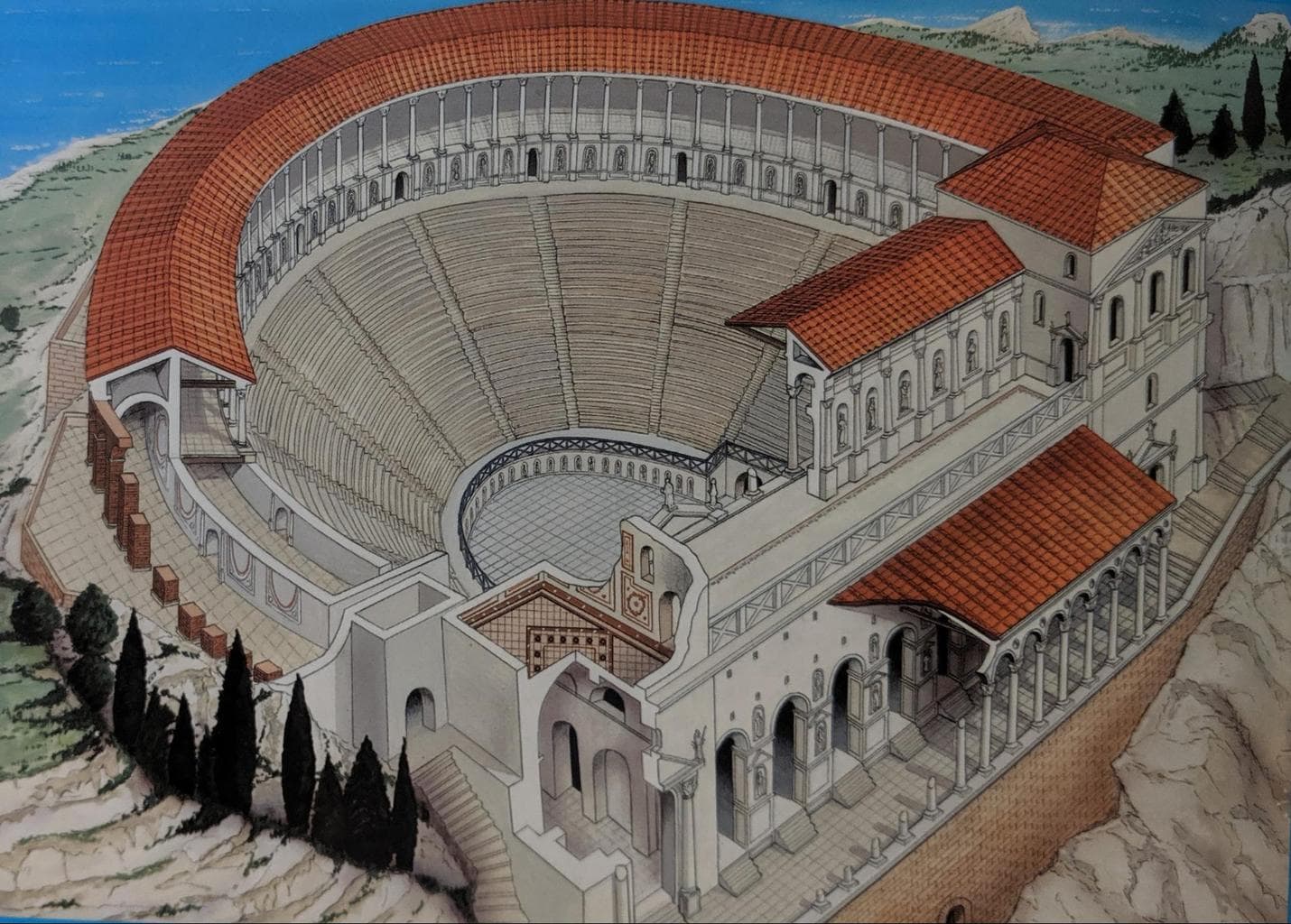
All you need to know to visit Taormina’s Ancient Greek Theatre Once In A Lifetime Journey
The view of Mount Etna and the sea beyond is absolutely superb at Taormina's 10,000-seat ancient Greek amphitheater, which was erected in the third century BC and expanded by the Romans. Duration: 1-2 hours Suggest edits to improve what we show. Improve this listing Tours & experiences Explore different ways to experience this place. See options
FileTaorminaTeatro Greco01.JPG Wikipedia
Taormina Amphitheatre (Teatro Greco Romano) in Sicily was initially built by the Greeks in the 3rd century BC before being rebuilt and enlarged by the Romans. While known as an amphitheatre, the site is actually an ancient theatre - not the gladiatorial arena of the type normally meant by the term.
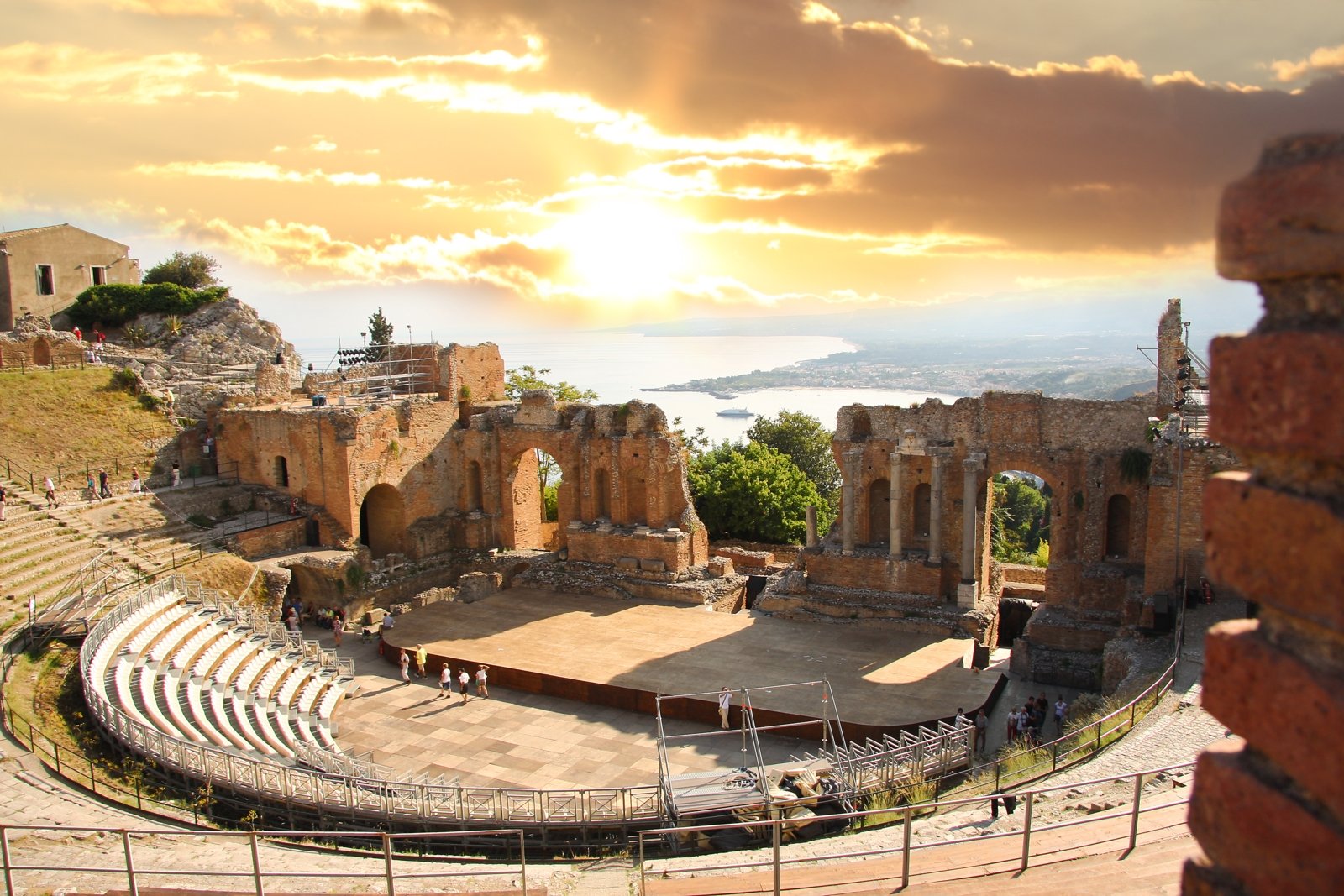
Taormina Walking Tour & Greek Theatre One Day Itinerary Sicily Activities
The Smile Starts at 21.00h Mahmood Starts at 21.30h 2018 Brit Floyd - The World's Greatest Pink Floyd Show Poltronissima Platea e Tribunetta Centrale €60,00 - Poltrona Tribunetta Laterale €50,00 - Cavea Numerata €45,00 - Cavea Non Numerata €35,00 Starts at 21.30h Further Info: Taormina Arte, Corso Umberto 19, tel: (0039) 0942 21142 Sting
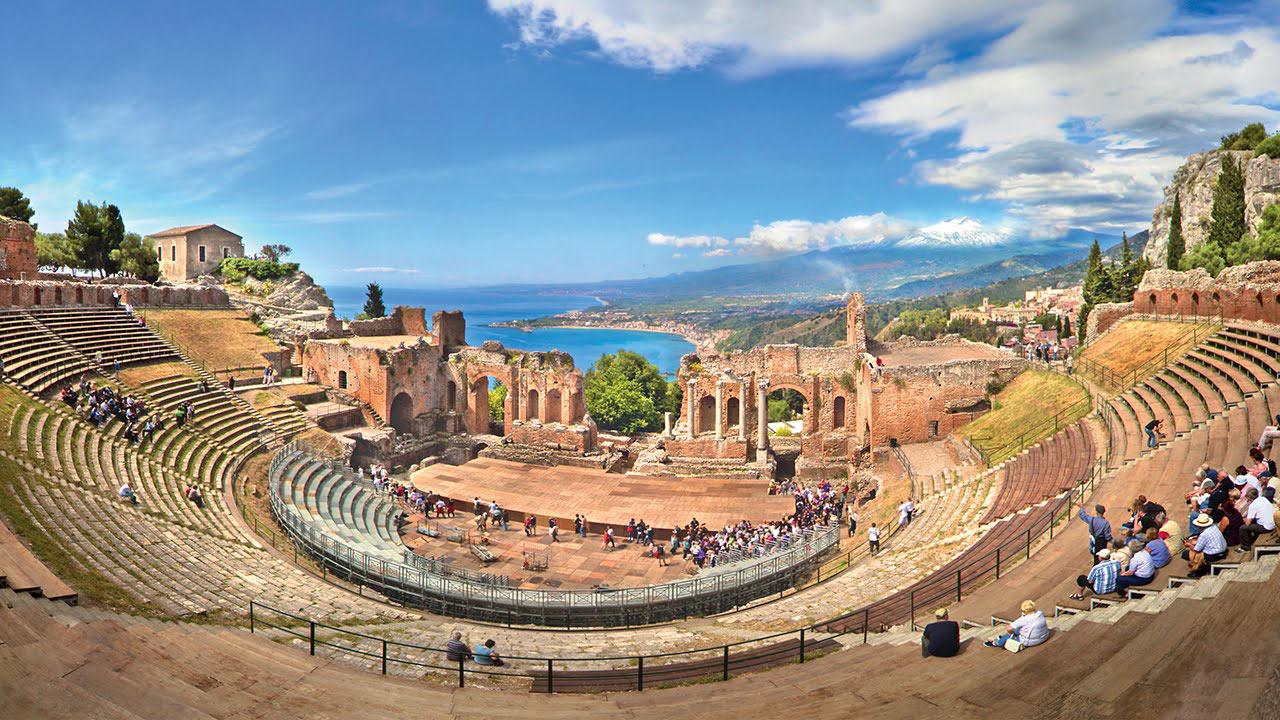
Visit Taormina TOP 15 Things to Do and Must See Sicily Travel
The Ancient Theatre of Taormina, also known as Teatro antico di Taormina, is an impressive historical site located in Taormina, Sicily, Italy. Originally constructed by the Greeks in the 3rd Century BC, the theatre was later rebuilt and expanded by the Romans. Despite being referred to as an amphitheatre, it is actually an ancient theatre, not.
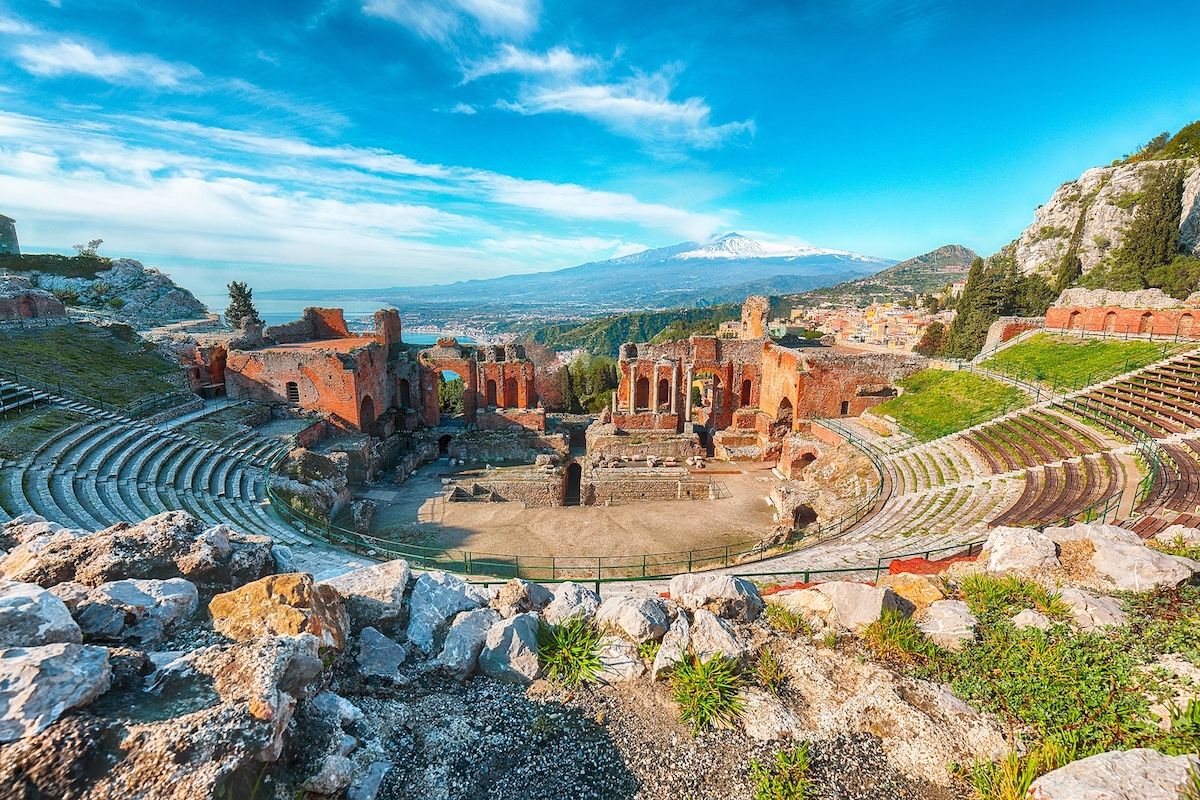
Wonders of Italy Ancient Theater of Taormina ITALY Magazine
The Greek Theatre of Taormina is the second largest theater of Sicily, after the one in Syracuse, it is also the world's best known and most admired. Since the 50s the theater has been tapped to host various forms of entertainment like theater, concerts, the award ceremonies of the David di Donatell, symphonies, operas and ballets. VIDEO

An ancient Greek theatre in Italy is lighting up to stay open for visitors
The ancient theatre of Taormina is the largest theatre in Sicily after that of Syracuse. Despite its restoration, the ruins tell us about the greatness of its civilization and its people, a lover of theatrical art, drama and scenic representations.
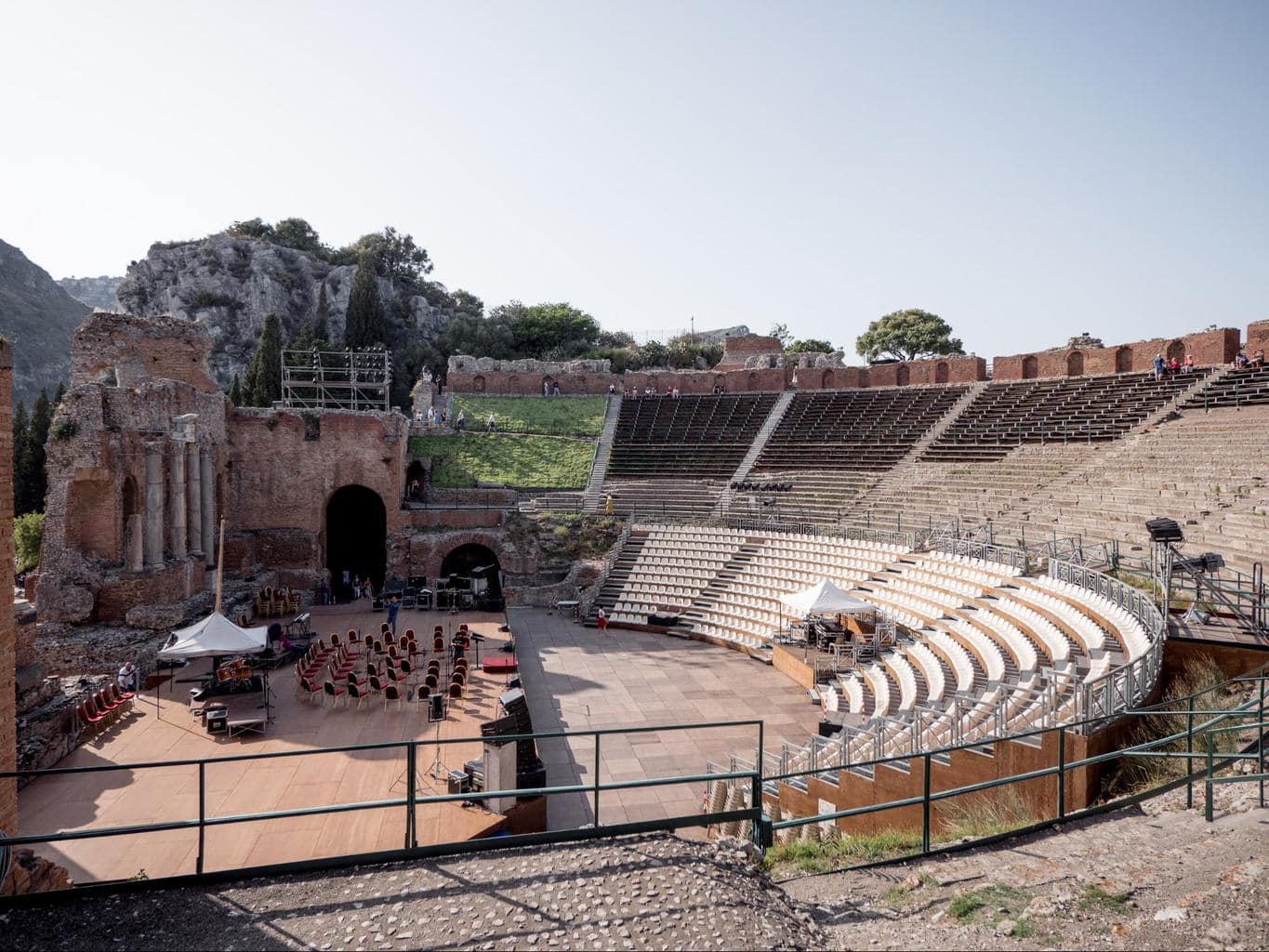
All you need to know to visit Taormina’s Ancient Greek Theatre Once In A Lifetime Journey
Taormina was an ancient Greek city built on the same site as today's city, on the slopes of Mount Tauro above Naxos in the 4th century BC, and it was Sicily's first Greek colony. In the years that followed until Roman arrival in the middle of the 3rd century, Taormina lost independence under Syracuse, regained it and lost it again.
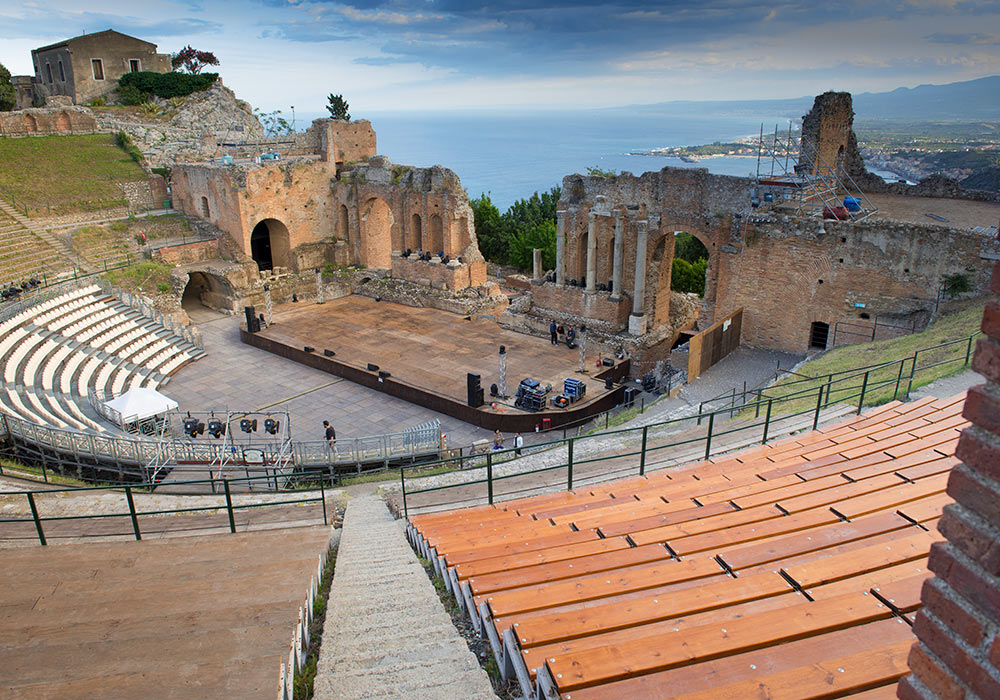
The Beautiful Greek Theatre in Taormina! Wonders of Sicily
The ancient theatre of Taormina ( Italian: Teatro antico di Taormina) is an ancient Greek theatre in Taormina, Sicily, built in the third century BC. History A Hellenistic theatre stood at Taormina from around the third century BC. The remains of another Hellenistic building have been found under the Roman cavea.
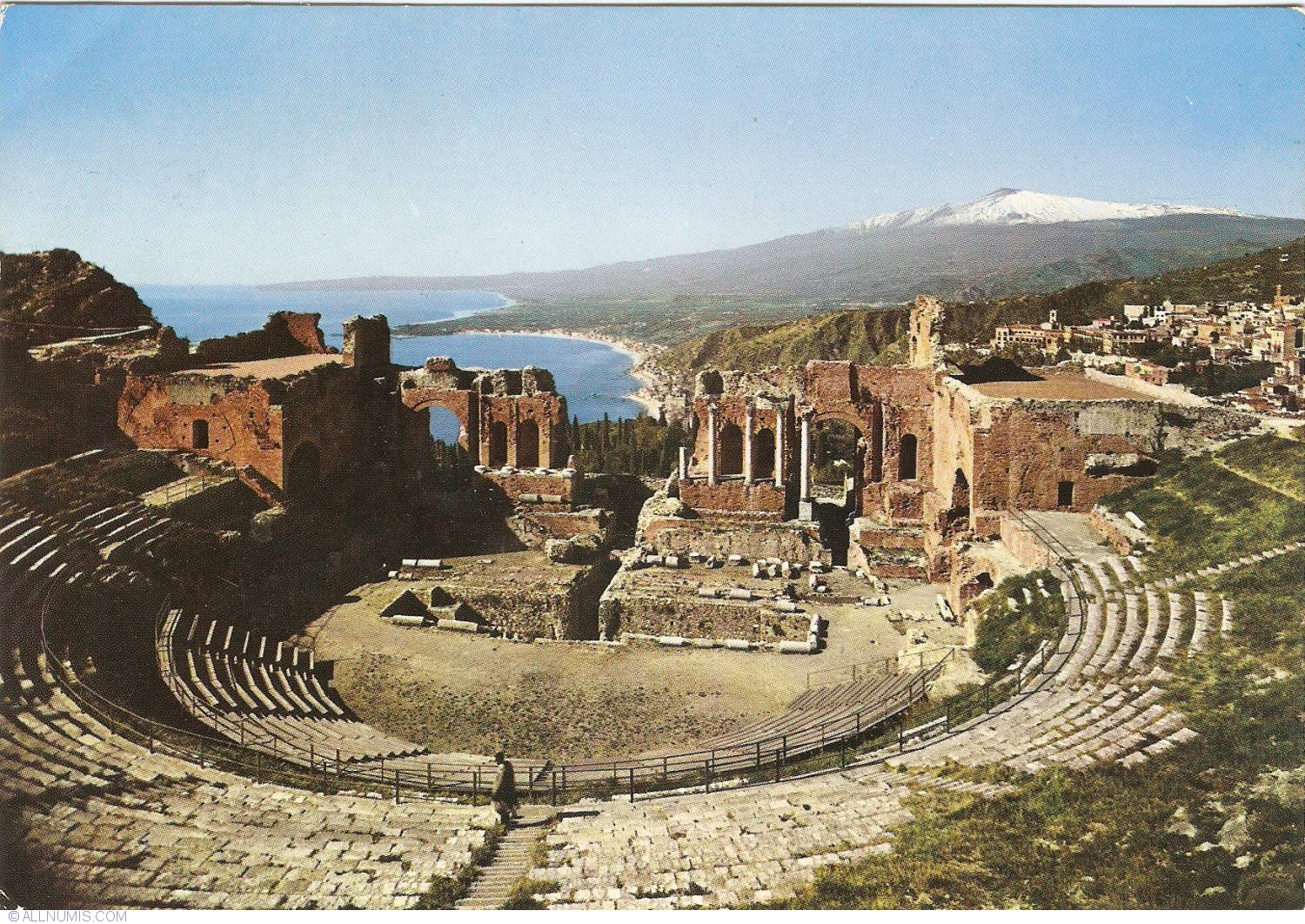
Taormina The Ancient theatre (Teatro Antico di Taormina), Taormina Italy Postcard 28741
The Ancient Theater of Taormina is the second largest of its kind in Sicily, after the Greek Theater of Syracuse. Built in the 3rd century BC, carved out of the hard rock of Monte Tauro, it could welcome thousands of spectators. The Greeks, who occupied the Taormina area in 403 BC, built the theater, which was remodeled a century later by the.

Ruins of the Ancient Greek Theater in Taormina on a sunny summer day with the mediterranean sea
Open today: 09:00 - 16:00 Provider: Aditus S.r.l. (GENOVA CULTURA S.C.A.R.L.) Last admission: 45 minutes before closing Wheelchair accessible Disabled visitors + 1 carer (with valid proof of social and healthcare services membership) enter for free Smartphone tickets accepted Skip the line Instant ticket delivery What's included
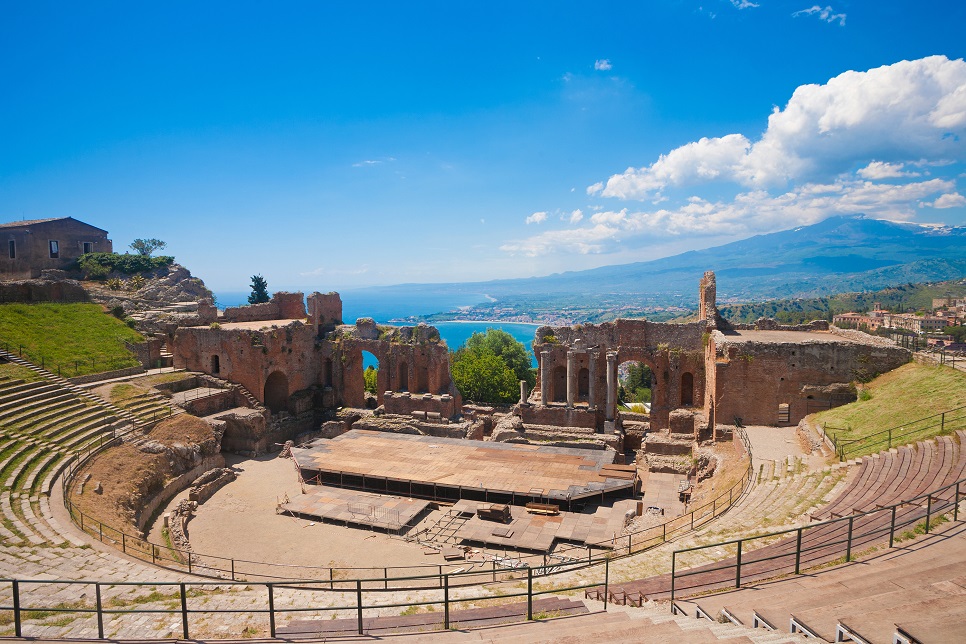
the Greek theatre of Taormina Wish Sicily
The history of Taormina dates back to before Ancient Greece established its first colony on Sicily in 734 BCE in Magna Graecia. After the fall of the Western Roman Empire, Taormina continued to rank as one of the more important towns of the island. Taormina followed the history of Sicily in being ruled by successive foreign monarchs.
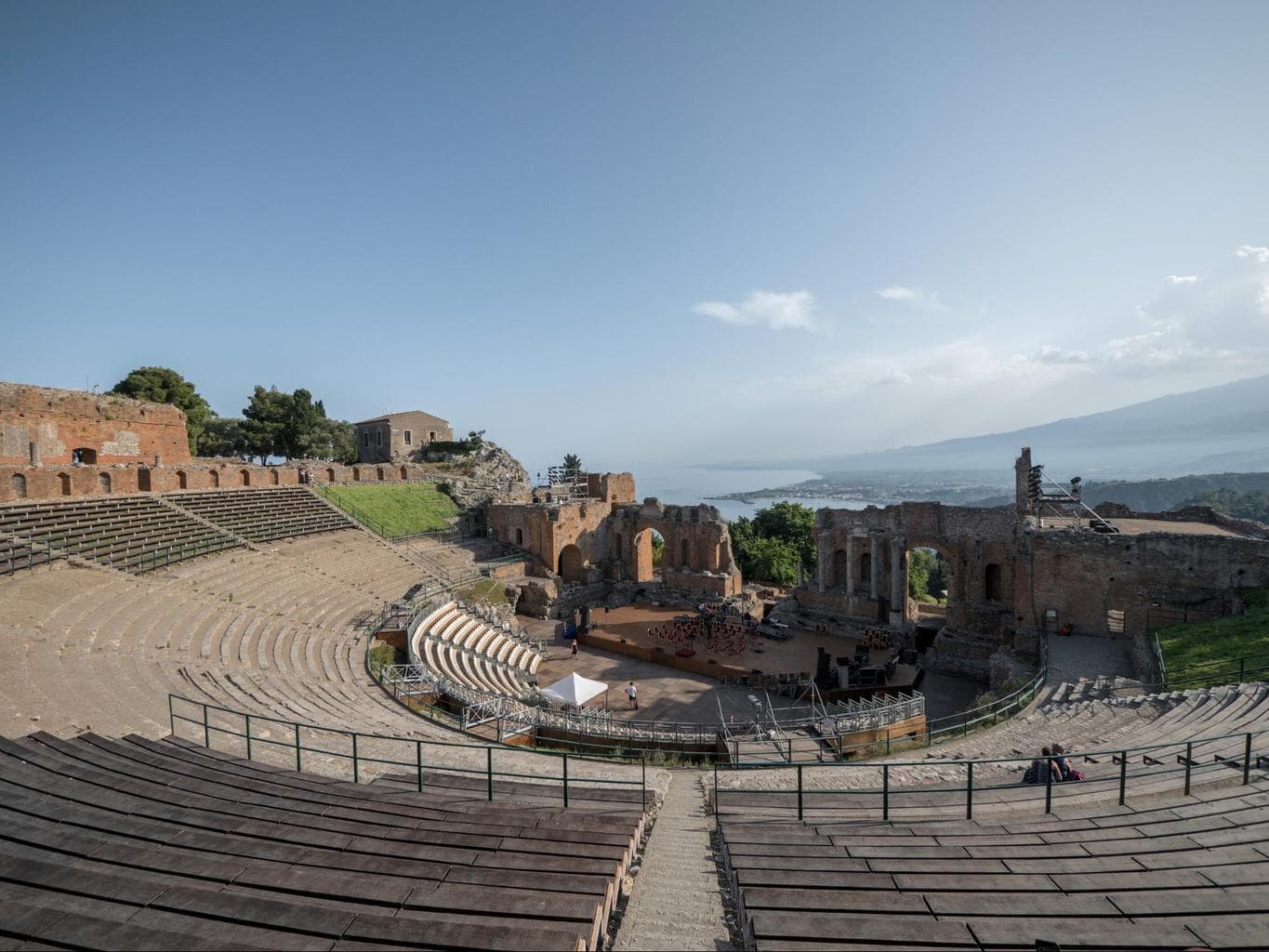
All you need to know to visit Taormina’s Ancient Greek Theatre Once In A Lifetime Journey
The construction of the Ancient Theatre of Taormina probably dates back to the 3rd century B.C. during the reign of Hieron II. In fact, on some of the steps is engraved the name of Philistides, the wife of the Greek tyrant.
.jpg)
the Greek theatre of Taormina Wish Sicily
Events January 1, 2024 - New Year's Concert by the Taormina Plectrum Orchestra Taormina New Year's Concert by the Taormina Plectrum Orchestra Congress Hall, Monday 1st January 2024 @ 7.00pm Free entrance (subject to availability of seats) Music by Bizet, Offenbach, Piazzolla, Arditi, Squarzina Soprano: Manuela Cucuccio
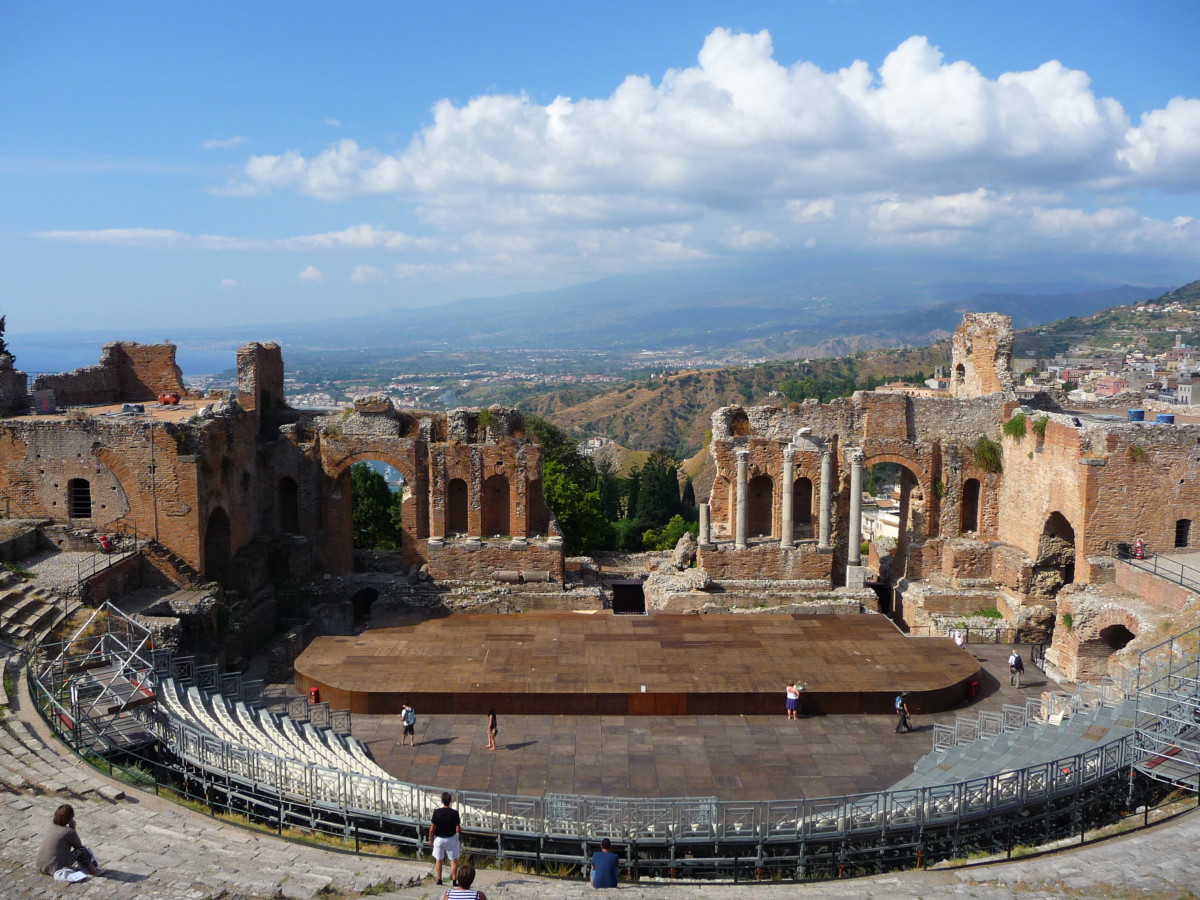
Visiting the Ancient Greek Theatre of Taormina, Sicily WanderWisdom
The Taormina Ancient Theatre is the second-largest in Sicily after the one in Siracusa. All the Romans did later, in accordance with their well-known ostentatious nature, was enlarge the theatre as it was very small and it apparently took decades to build. It is fifty metres wide, one hundred and twenty metres long and twenty metres high, which.

Visiting The Ancient Theatre of Taormina with kids trulymadlykids.co.uk
A drawing of the theatre in Taormina. Facsimile from Douglas Sladen: In Sicily (1901) The Ancient theatre in Taormina was built by the Romans on the site of an earlier Greek one. It is the largest theatre in Sicily after that of Siracusa. Below the mountain to the left is Hotel Timeo, the first hotel to be opened in Taormina, in 1864.

Ancient Greek Theatre in Taormina with snowy Mount Etna in the backdrop. Ancient greek theatre
The Ancient Theatre One of the most emblematic sites of Taormina is certainly the Ancient Theatre, built by the Greeks in the third century BC and enlarged by the Romans. It is the second largest theatre in Sicily, after Syracuse's one: its cavea, for example, has a diameter of almost 110 meters, divided into nine sectors.